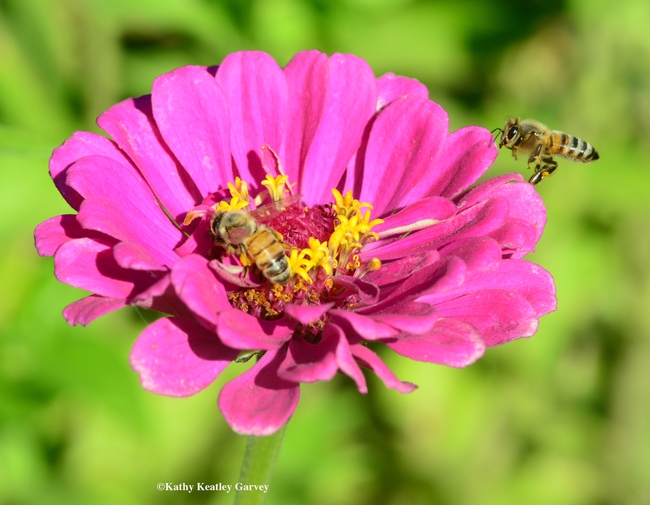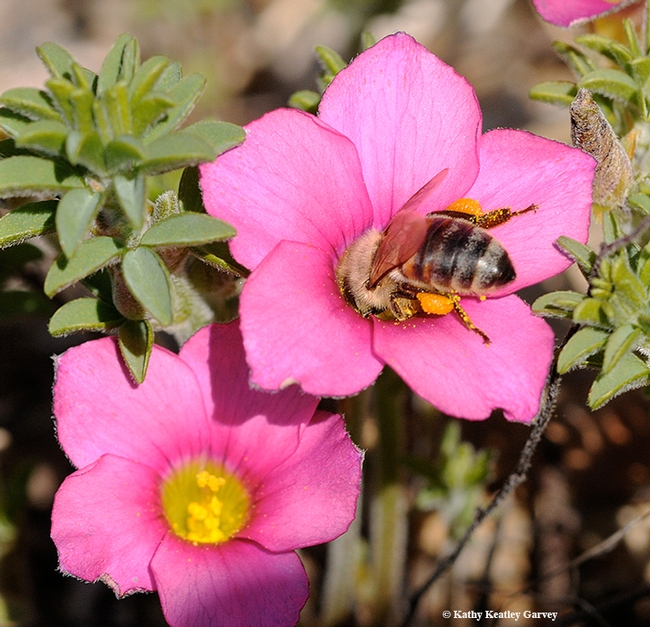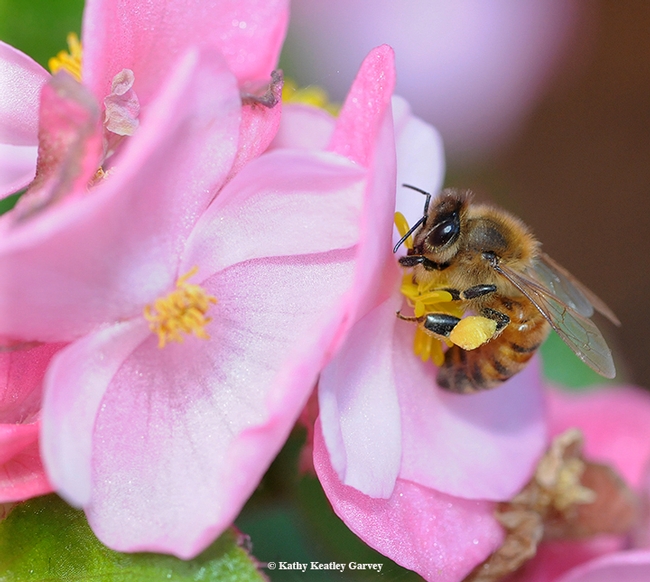Bees are known to prefer yellow and blue flowers, but pink suits them just fine, too.
Here's proof:
- Two honey bees nearly collide over a pink zinnia.
- Another honey bee burrows into a pink oxalis.
- A young honey bee takes a liking to a pink begonia. Begonias aren't considered bee friendly flowers, but this bee buzzes to its own tune.
Meanwhile, the Western Apicultural Society (WAS), under the presidency of Extension apiculturist emeritus Eric Mussen of the UC Davis Department of Entomology, and Nematology, is gearing up for its 40th annual meeting, returning to its roots at UC Davis, and the major concern is bee health.
The conference takes place Sept. 5-8 and you're invited. Registration is now open.
Mussen, who retired as Extension apiculturist in 2014 after a 38-year career, is serving his sixth term as WAS president since 1984.
WAS, which serves the educational needs of beekeepers from 13 states, plus parts of Canada, was founded in 1977-78 for “the benefit and enjoyment of all beekeepers in western North America,” said Mussen, who retired as Extension apiculturist in 2014 after a 38-year career. As emeritus, he continues to maintain an office on the third floor of Briggs Hall, UC Davis Department of Entomology and Nematology.
The organization was the brainchild of apiculture professor Norm Gary (UC Davis faculty, 1962 to 1994), who patterned it after the Eastern Apicultural Society (EAS). Gary participated in the EAS meetings as a graduate student at Cornell University, Ithaca, N.Y., where he received his doctorate in apiculture in 1959.
Now why do we want our bees to "be in the pink?"
"In the pink!" means being in good health.
Attached Images:


